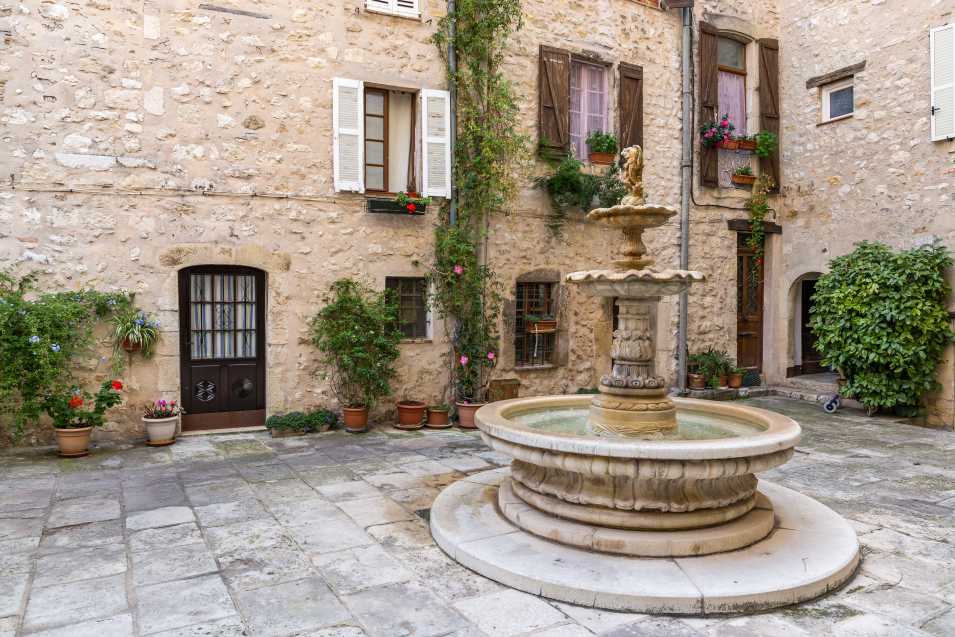Wall Fountain; In order to ensure continuous operation of a wall fountain throughout the winter season, it is necessary to establish the installation of an electrical outlet, hence facilitating convenient control.
Prior to proceeding with the task at hand, it is imperative to acknowledge and implement some safety measures.
Placement
If you are planning to purchase a wall fountain, it is important to determine the right placement. This can make a difference in aesthetics, functionality and safety.
It may be wise to hire a professional to install your water feature. A well-placed fountain can create a tranquil ambiance in your home. Make sure the company you choose offers delivery services as well.
While some fountains are only meant for outdoor use, others are made for indoors as well. An electrical outlet is required for your new water feature.
Luckily, installing a wall fountain doesn’t take up too much room. In fact, it can free up your walls for other purposes. Choosing the right one will help you make the most of your space.
For the best possible view, your fountain should be placed where it is viewed from most windows in your home. The fountain should also be positioned in a location where it can get the most natural sunlight.
Safety precautions
When installing a wall fountain, safety precautions should be taken to avoid injury and damage. In the event of electrical trouble, it’s best to call an electrician. Having a licensed professional install an outlet for your water feature will ensure that you are not left in the dark.
There are several other aspects of a fountain’s electric system that should be addressed. These include bonding, grounding and the water fountain.
Bonding is a process that ties the conductive elements of the fountain’s structure together. This eliminates voltage gradients in the area and helps reduce shock hazard.
Grounding is a similar process that ties the fountain’s electrical system to the surrounding earth. Ground fault circuit interrupters are available to help prevent accidents.
Using a waterproof shield can be a good idea when installing an outlet. If your outlet isn’t covered, moisture can enter the box and cause tripped breakers. The GFCI has a built-in weatherproof cover that can be flipped up to access the sockets.

Ground fault interrupter (GFCI) device
A Ground fault interrupter (GFCI) device is a safety device that shuts off electrical power within a few seconds if it detects a ground fault. This prevents the possibility of a fatal electric shock.
They are typically installed in garages, bathrooms, and outdoors. They are especially useful for corded appliances.
When the GFCI is plugged in, it senses the difference in current flowing from the hot side to the neutral side of an electrical outlet. If a leakage current occurs, the GFCI will trip. The circuit breaker will shut off the electricity within a few hundredths of a second.
It has been estimated that there are about 200 deaths in the United States each year due to ground faults. These accidents are caused by electrical currents that leak from a damaged electrical appliance or from an object that is wet or damp.
In addition to the danger of electrocution, high levels of electrical current can cause tissue and organ burning. They also can cause breathing problems and heart fibrillation.
Keeping the fountain running in the winter
If you own an outdoor wall fountain, you might need to protect it from the cold weather. When it gets too cold, the water inside it can freeze. This can damage the pump. Also, you should take steps to remove all the water before winter begins.
Before winter, you will need to clean the fountain and its pump. Some fountains come with a bottom plug for easy draining. You can also use a pressure washer to get the fountain clean.
After cleaning, you should let the fountain dry before protecting it. Algae buildup can prevent the filter from functioning properly. A thin coat of wax can help protect copper fountains.
After the winter season, you will need to replace the towels in the basin. You should also check for any leaks in the pipes or other components of the fountain. Once the ice has melted, you can turn on the fountain.
Ideally, the space between freezing and room temperature is ideal. The position of the fountain will determine the water temperature.
Related Article: Stunning Backyard
